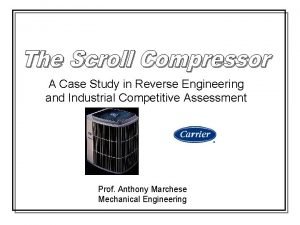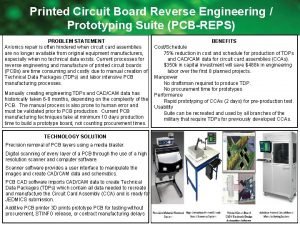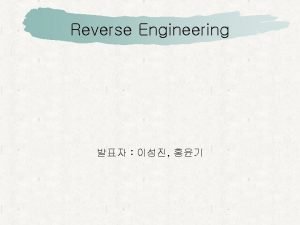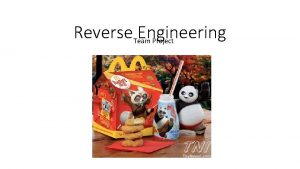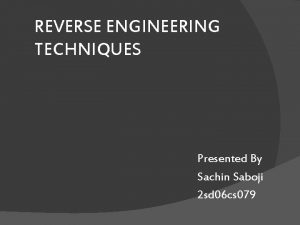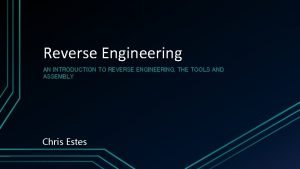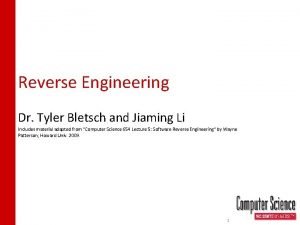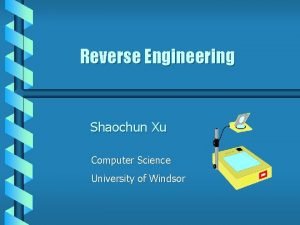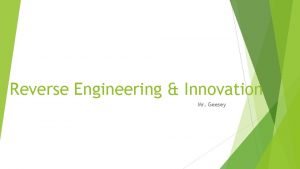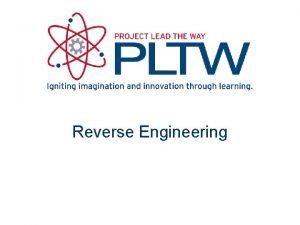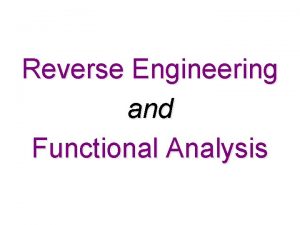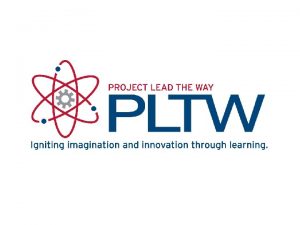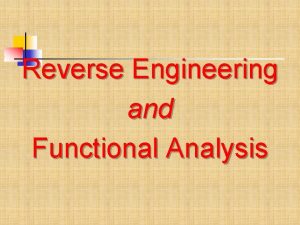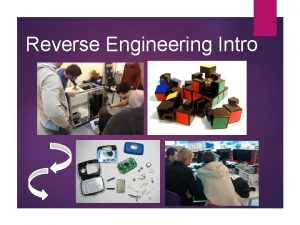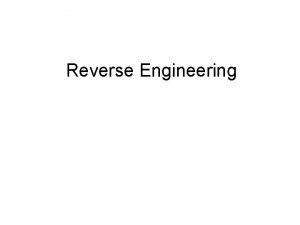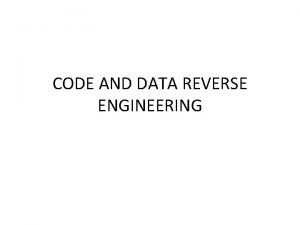REVERSE ENGINEERING REVERSE ENGINEERING Reverse Engineering is a












- Slides: 12

REVERSE ENGINEERING .

REVERSE ENGINEERING • Reverse Engineering is a process of redesigning an existing product to improve and broaden its functions, add quality and to increase its useful life. • The main aim of reverse engineering is to reduce manufacturing costs of the new product, making it competitive in market. • The duplication is done without the aid of drawings, documentation or computer model. 2

WHY REVERSE ENGINEERING? • The original producer no longer produces the product. • There is inadequate documentation of product. • Some bad features of the product needs to be redesigned. • To update obsolete materials or antiquated manufacturing processes with more current, less expensive technologies. 3

METHODOLOGY PHYSICAL MODEL 3 D SCANNER POINT CLOUD DATA SURFACE MODEL ACCURACY, SMOOTHNESS CAD MODEL 4

5

DIGITIZING • Collecting data from physical part. • Used when drawing of object is not available. • Aim is to generate a 3 D mapping of the product in the form of CAD file. • This requires acquisition of surface data, which is large number of points on the product surface. • For this two types of processes are used: contact and non contact method. 6

DISCRETIZATION METHOD Contact method • Requires contact between the component surface & a measuring tool. Non contact method • Uses light as the main tool • Uses white light or laser scanners to scan 3 D objects to generate CAD design. • Uses Coordinate Measuring Machine(CMM), electromagnetic digitizer or sonic digitizers to get desired coordinates. 7

MANIPULATION OF DATA • Basically, after completion of this a CAD model of product is obtained. • Used to fit a geometry to the large number of points obtained from digitizing. • The surface can be mathematically defined as algebraic or parametric surface. • Surface fitting techniques can be of two types: interpolation and approximation techniques. 8

SURFACE FITTING TECHNIQUES Interpolation technique • Surface to be fitted passes through all the data points. • Used when the data points are accurately measured without any errors. Approximation technique • Surface represents a generalized or best fit to the data points. • Used when large number of data points are to be fitted. 9

ADVANTAGES • CAD models are used for manufacturing or rapid prototyping applications. • Hence we can work on a product without having prior knowledge of Cost saving for developing new products. Lesser maintenance costs Quality improvement Competitive advantages the technology involved. 10

APPLICATIONS • MANUFACTURING FIELD: create a 3 D virtual model of an existing physical part for use in 3 D CAD, CAM, CAE or other software and to analyze the working of a product. • MEDICAL FIELD: Imaging, modeling and replication physical model) of a patient's bone structure. • SOFTWARE ENGINEERING: (as a To detect and neutralize viruses and malware. 11

THANK YOU
 Forward and reverse engineering
Forward and reverse engineering Forward engineering in software engineering
Forward engineering in software engineering Reverse engineering case study
Reverse engineering case study Printed circuit borard reverse engineering
Printed circuit borard reverse engineering Structural analysis reverse engineering
Structural analysis reverse engineering Ollydbg reverse engineering
Ollydbg reverse engineering Reverse engineering team
Reverse engineering team Phases of reverse engineering
Phases of reverse engineering Intro to reverse engineering
Intro to reverse engineering Reverse engineering guide
Reverse engineering guide Tyler bletsch
Tyler bletsch Reverse engineering computer science
Reverse engineering computer science Reverse engineering
Reverse engineering


